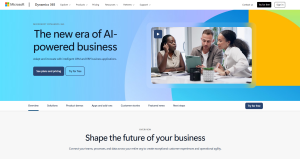Are you tired of seeing your best employees walk out the door? As a small business owner, losing top talent can majorly blow your productivity and bottom line. But what if I told you that boosting employee retention doesn’t have to break the bank?
In fact, with a few simple and free strategies, you can create a work environment that keeps your team engaged, motivated, and loyal. From effective recognition programs to fostering open communication, these 5 best employee retention strategies are proven to work for small businesses like yours. Wondering if you should add to your team by employing contractors or hiring more employees? This guide can help you weigh the benefits and drawbacks of each.
So, if you’re ready to say goodbye to high turnover rates and hello to a thriving, dedicated team, keep reading. Your small business success story starts here.

27% higher customer satisfaction
Professional delivery features:
- Real-time GPS tracking
- Automated ETA updates
- Delivery confirmation photos
- 27% higher delivery satisfaction
Effective Employee Retention Strategies For Small Business Owners
Implement a Structured Employee Recognition System
To effectively boost employee retention, it’s crucial to establish a structured recognition system that aligns with your company’s values and goals. Start by clearly defining the criteria for recognition, such as exceptional performance, teamwork, or customer service. Regularly assess employee performance against these criteria to identify those who consistently meet or exceed expectations.
Utilize a mix of formal and informal recognition methods to keep employees engaged and motivated. Formal recognition can include employee of the month programs, performance-based bonuses, or awards ceremonies with corporate crystal awards. Informal recognition, such as verbal praise or handwritten notes, can be equally impactful when delivered sincerely and frequently.
Engage employees in the process of designing recognition programs to ensure they resonate with their needs and preferences. Conduct surveys or focus groups to gather input on the types of recognition they value most, such as public acknowledgment, professional development opportunities, or extra time off. Incorporating employee feedback demonstrates that their opinions matter and fosters a sense of ownership in the recognition system.
Make Recognition Timely, Specific, and Meaningful
The timing and content of recognition are critical factors in its effectiveness. Recognize employees promptly after their achievements to reinforce the connection between their actions and the positive outcome. Delayed recognition can diminish the impact of new employee, and fail to reinforce desired behaviors.
When recognizing employees, provide specific details about why they are being acknowledged. Instead of generic praise, highlight the particular actions or behaviors that contributed to their success. Specific recognition helps employees understand what they did well and encourages them to repeat those behaviors in the future. For instance, a unique piece of contemporary wall art canvas prints can serve as a thoughtful and personalized recognition award.
Tailor recognition of individual preferences to ensure it holds significance for each employee. Some may appreciate public acknowledgment, while others prefer a more personal approach. Consider using a mix of rewards, such as gift cards, extra time off, or professional and personal development opportunities, to cater to diverse motivations and interests.
In addition to recognizing specific achievements, celebrate employee milestones and anniversaries to show appreciation and retain employees for their loyalty and dedication. Acknowledge years of service, significant project completions, or personal milestones like graduations or marriages. These celebrations foster a sense of belonging and demonstrate that the company values employees as individuals.
Encourage Peer-to-Peer Recognition
Empower employees to recognize and appreciate their colleagues’ contributions through peer-to-peer recognition programs. Provide platforms or tools that enable employees to easily nominate or praise their coworkers for outstanding work or helpful behaviors. Peer recognition fosters a culture of appreciation and reinforces the idea that everyone’s efforts are valued.
Regularly showcase peer recognition in company communications, such as newsletters or team meetings, to amplify its impact and encourage ongoing participation. Peer-to-peer recognition not only boosts individual morale but also strengthens team bonds and collaboration.
By implementing a structured employee recognition system for retaining employees, delivering timely and meaningful recognition, and encouraging peer-to-peer appreciation, small businesses can significantly improve employee retention. These strategies demonstrate that the company values its employees’ contributions and is committed to their growth and well-being, ultimately fostering a positive work environment that encourages loyalty and long-term commitment.
Foster a Positive Work Environment Through Open Communication
-
Promote open communication to create a supportive work environment
-
Encourage employee feedback and actively listen to their concerns
-
Communicate company goals and changes transparently to build trust
Encourage Two-Way Feedback and Active Listening
Creating open channels for employees to share their ideas, concerns, and feedback is essential for fostering a positive work environment. When employees feel heard and valued, they are more likely to stay with the company long-term. Encourage regular one-on-one meetings between managers and their team members to discuss work-related issues, career aspirations, and any challenges they may be facing. To enhance your company’s growth and maintain that positive work environment, discover which tasks you can delegate to nurture your small business, allowing you more time to focus on strategic planning and employee engagement.
Actively listening to employee input demonstrates that their opinions matter. When managers take the time to understand their team’s perspectives, they can make more informed decisions and create a more inclusive work environment. Encourage managers to ask open-ended questions, paraphrase what they’ve heard, and show empathy when employees share their concerns.
Benefits of Active Listening:
-
Builds trust between employees and management
-
Improves problem-solving and decision-making
-
Increases employee engagement and job satisfaction
Regularly seeking feedback on management practices and company policies is another way to foster open communication. Conduct anonymous surveys or focus groups to gather honest feedback from employees. Use this feedback to identify areas for improvement and make necessary changes to create a more positive work environment.
Communicate Company Goals, Expectations, and Changes Transparently
Keeping employees informed about company objectives and their role in achieving them is crucial for employee engagement and retention. When employees understand how their work contributes to the company’s success, they feel more invested in their jobs and are more likely to stay with the organization.
Be transparent about any changes or challenges faced by the organization. Whether it’s a shift in strategy, restructuring, or financial difficulties, employees appreciate honesty and clarity from their leaders. Provide regular updates on company performance and celebrate successes together to create a sense of unity and shared purpose.
Benefits of Transparent Communication:
-
Increases employee trust and loyalty
-
Reduces uncertainty and anxiety during times of change
-
Enhances employee motivation and productivity
Invest in Professional Development Opportunities to Retain Employees Top Talent
-
Upskilling employees leads to higher job satisfaction and retention rates
-
Mentorship programs foster a supportive work environment and encourage loyalty
-
Professional development opportunities attract and retain top talent in a competitive market
Offer Skill-Building Workshops and Training Programs
Investing in your employees’ professional development demonstrates that you value their contributions and are committed to their long-term success. By identifying key skills that align with company goals and employee career aspirations, you can develop targeted training programs that benefit both the individual and the organization.
Providing in-house or external training opportunities helps employees develop critical skills while encouraging attendance at industry conferences and networking events exposes them to new ideas and best practices. This not only improves job performance but also shows employees that you are invested in their career development and professional growth.
Create a Mentorship Program and Encourage Knowledge Sharing
Mentorship programs are an effective way to facilitate knowledge transfer and foster a supportive work environment. By pairing experienced employees with newer team members, you create opportunities for collaboration, learning, and personal growth.
Benefits of Mentorship Programs:
-
Accelerates onboarding and time-to-productivity for new hires
-
Helps retain institutional knowledge as experienced employees retire or leave the company
-
Builds strong relationships and increases employee engagement
Encouraging cross-functional collaborations exposes employees to different aspects of the business, broadening their skill sets and understanding of the company’s overall mission. Recognizing and rewarding employees who actively mentor and support their colleagues reinforces the value of knowledge sharing and creates a culture of continuous learning and growth. Some companies even use mentor mentee matching software to further facilitate the mentoring processes and ensure better outcomes.
By investing in professional development opportunities and creating a supportive environment for learning and collaboration, small businesses can attract and retain top talent, even in a competitive job market. These initiatives not only benefit individual employees but also contribute to the long-term success and stability of the organization.
Cultivate a Strong Company Culture That Values Work-Life Balance
-
Prioritize employee well-being through flexible work arrangements and healthy boundaries
-
Lead by example and demonstrate a commitment to work-life balance at all levels
-
Foster a supportive and inclusive workplace culture that values open communication
Creating a company culture that prioritizes work-life balance is crucial for retaining talented employees in today’s competitive job market. Small businesses that invest in their employees’ well-being and foster a supportive work environment are more likely to keep their top performers engaged and committed to the organization.
Offer Flexible Work Arrangements and Prioritize Employee Well-being
In the wake of the COVID-19 pandemic, many employees have come to value the flexibility and autonomy that remote work and flexible hours provide. Small businesses that adapt to these changing expectations by offering flexible work arrangements, when feasible, can significantly boost employee satisfaction and retention.
Allowing employees to have some control over their work schedule can help them better manage their personal and professional responsibilities, reducing stress and burnout.
Creating a culture that values employee well-being means encouraging staff to take regular breaks, use their vacation time, and prioritize their mental health. This can include offering mental health days, providing resources for stress management, and promoting open communication about workload and burnout.
Even in a remote or hybrid work environment, it’s essential to create opportunities for employees to connect and build relationships with their colleagues. Regular team-building activities, virtual coffee breaks, and social events can help foster a sense of belonging and camaraderie, which can increase employee engagement and retention.
Lead by Example and Demonstrate a Commitment to Work-Life Balance
For a company culture that values work-life and healthy work life balance, to take root, it must start at the top. Small business owners and managers must lead by example and demonstrate a genuine commitment to promoting healthy work habits and boundaries.
When leaders consistently work long hours, send emails late at night, or fail to take time off, they send a message that this behavior is expected and valued. Instead, managers should model healthy work habits, such as respecting working hours, taking breaks, and using their vacation time.
While occasional overtime may be necessary to meet deadlines or handle emergencies, chronic overwork should not be the norm. Encourage employees to prioritize their tasks, delegate when appropriate, and communicate openly about their workload to prevent burnout.
Managers should schedule regular one-on-one meetings with their team members to discuss workload, job satisfaction, and any challenges they may be facing. By proactively addressing issues and providing support, leaders can help prevent burnout and show their employees that they are valued and appreciated.
Cultivating a strong company culture that prioritizes work-life balance requires ongoing effort and commitment from all levels of the organization. By offering flexible work arrangements, leading by example, and fostering a supportive work environment, small businesses can create a culture that attracts and retains top talent, even in the face of fierce competition from larger companies.
Personalize Retention Strategies for Your Small Business
-
Tailor retention efforts to your unique business needs and employee preferences
-
Utilize the 3 R’s of employee retention: Recognition, Relationships, and Rewards
-
Continuously monitor and adapt your strategies based on effectiveness and feedback
What are the 3 R’s of employee retention?
Effective employee retention strategies for small businesses can be summarized by the 3 R’s: Recognition, Relationships, and Rewards.
Recognizing your employees’ hard work and achievements is crucial for boosting morale and retention. Implement the personalized recognition programs mentioned in the previous section, such as employee spotlights, peer-to-peer recognition, and milestone celebrations. Ensure that recognition is timely, specific, and meaningful to your team members. Enhance your recognition programs with unique employee benefits for small businesses, ensuring your team feels valued and motivated.
Building strong relationships between employees and management is key to creating a loyal and engaged workforce. Encourage open communication through regular one-on-one meetings, team discussions, and an open-door policy. Foster a positive workplace culture and a supportive work environment by actively listening to your employees’ concerns, offering guidance and mentorship, and promoting collaboration and teamwork. Wondering about the process of hiring employees to enhance your workplace dynamic? Our comprehensive guide on recruiting employees will lead you through the necessary steps to build a successful and cohesive team.
Rewarding your employees goes beyond monetary compensation. Offer meaningful rewards that align with their personal and professional goals, such as professional development opportunities, flexible work arrangements, health insurance, wellness programs, and quality crystal trophies. By investing in your employees’ growth and well-being, you demonstrate your commitment to their success and encourage long-term loyalty.
Unique Needs of Your Small Business and Employees
To create effective employee retention strategies for small business owners, it’s essential to understand the specific challenges and opportunities within your small business, as well as your employees’ unique needs and preferences.
Assess the specific challenges and opportunities within your small business
Evaluate your small business’s current retention rates, turnover costs, and competitive landscape. Identify the specific factors that may contribute to your employee turnover rate, such as limited career advancement opportunities, lack of work-life balance, or inadequate compensation. At the same time, recognize the unique strengths and opportunities your small business offers, such as a close-knit team, flexible work environment, or niche expertise. Discover how to attract and retain top talents for your small business, leveraging these insights to build a cohesive and dedicated workforce.
Gather employee feedback to identify their priorities and pain points
Engage your employees in open and honest conversations to understand their priorities, motivations, and pain points. Conduct regular surveys, focus groups, or one-on-one meetings to gather feedback on job satisfaction, work environment, and areas for improvement. Encourage employees to share their ideas and suggestions for enhancing the workplace experience.
Tailor your retention strategies to address these unique needs and preferences
Based on the insights gained from assessing your business and gathering employee feedback, develop targeted retention strategies that address the specific needs and preferences of your team. For example, once employees decide if work-life balance is a top priority, consider implementing flexible work arrangements or offering additional paid time off. If professional development is a key motivator, create individualized training plans and provide opportunities for skill-building and career growth.
Continuously Monitor and Adapt Your Employee Retention Efforts
Employee retention is an ongoing process that requires regular monitoring, evaluation, and adaptation to ensure the effectiveness of your strategies.
Celebrate successes and learn from setbacks to continuously improve your retention efforts
Recognize and celebrate the successes of your retention efforts, such as improved employee engagement, reduced turnover, or positive feedback from existing team members. Acknowledge the contributions of employees who have demonstrated loyalty and commitment to your small business. At the same time, view setbacks or challenges as opportunities for learning and growth. Analyze the root causes of any turnover or dissatisfaction, and use those insights to inform future strategies and decision-making.
By personalizing your retention strategies, understanding the unique needs of your many small business owners and employees, and continuously monitoring and adapting your efforts, you can create a loyal, engaged, and high-performing workforce that drives long-term success for your organization.
Regularly review the effectiveness of your retention strategies using metrics and employee feedback
Establish key performance indicators (KPIs) to measure the success of your retention efforts, such as reduced turnover rates, increased employee engagement, employee retention refers and improved job satisfaction scores. Regularly track and analyze these metrics to identify trends and areas for improvement. Continue to gather employee feedback through surveys, exit interviews, and regular check-ins to gain valuable insights into the effectiveness of your strategies.
Be open to adapting and refining your approach based on changing needs and circumstances
As your small business grows and evolves, so too will your employees’ needs and preferences. Remain flexible and open to adapting your retention strategies based on changing circumstances, such as shifts in the competitive landscape, technological advancements, or generational differences in the workforce. Continuously refine your approach based on data-driven insights and employee feedback to ensure that your strategies remain relevant and effective.
Boost Your Small Business’s Success by Prioritizing Employee Retention
Effective employee recognition, open communication, professional development, and a strong company culture are the pillars of a successful employee retention strategy. By tailoring these approaches to your small business’s unique needs, you can create a work environment that attracts and retains top talent. By focusing on educating your staff, you can further enhance employee satisfaction and drive your small business towards greater success.
Imagine the impact on your business when your employees feel valued, supported, and engaged. They’ll be more productive, loyal, and committed to helping your company thrive. Start by implementing one or two of the strategies discussed, and gradually expand your efforts as you see the positive results.






























